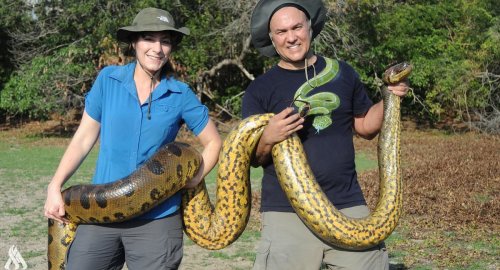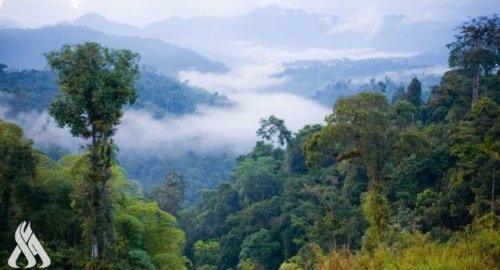
Scientists Just Discovered The World’s Biggest Snake In The Amazon Rainforest

Multimedia
- 21-02-2024, 10:38
INA- SOURCES
The largest snake in the world was recently discovered in the Amazon rainforest by Dutch biologist and TV wildlife presenter Professor Freek Vonk.
Details of the discovery were recently published in the journal MDPI Diversity, highlighting the unique characteristics of this massive snake.
Discovering The Northern Green Anaconda
Vonk worked with a team of 14 other scientists from nine countries. Together, they determined that the northern green anaconda is a completely separate species from the green anaconda, which was the only officially recognized green anaconda species in the Amazon until now.“Genetically, the differences are massive,” Bryan Fry, one of the co-authors of the study and a biologist at the University of Queensland, told National Geographic. “They’re five-and-a-half percent different, genetically. Now, to put that into context, [humans are] about two percent different from chimps.”
The scientists assigned the new anaconda species the Latin name Eunectes akayima.
“The word ‘akayima’ comes from several indigenous languages of northern South America and means ‘great snake,'” Vonk said, according to The Sun.
Vonk was also filmed swimming alongside the northern green anaconda, showing just how staggeringly massive the snake truly is.
“You can see in the video the biggest anaconda I have ever seen, as thick as a car tire, 26 feet long and weighing over 440 lbs — with a head as big as my head,” Vonk said.
The study’s lead author, Jesus Rivas, noted that he realized over 15 years ago that there was more than one species of green anaconda. He and his wife, Sarah Corey-Rivas, have been analyzing samples for genetic differences ever since, but it took until now to publish their findings.
“Sarah and I started working on this in 2007 when we first noticed there was a big genetic difference between the Venezuelan samples and some samples from Peru,” Rivas said. “Then we started the process of gathering samples and collaborators throughout South America and beyond to complete the mosaic of samples that allowed us to put the study together.”
The scientists also highlighted the issue of climate change and how it is affecting the ecosystem of the Amazon — and why that could pose a threat to the northern green anaconda.
How Climate Change Is Affecting The Amazon
The lingering effects of climate change around the world have been well documented for some time now, but Vonk draws special attention to how rising temperatures and deforestation could impact the inhabitants of the rainforest.“The Amazon region is under severe pressure from climate change and continued deforestation,” he said. “Over a fifth of the Amazon has already disappeared, which is more than 30 times the area of the Netherlands. The survival of these iconic giant snakes is inextricably linked to protecting their natural habitat.”
Fry added that because the northern green anaconda has a smaller range than similar snakes in the southern regions, it is “much more vulnerable” to the effects of climate change.
Still, the discovery is certainly exciting for biologists, and it raises the question of how many other anaconda species are still out there waiting to be discovered.
“I have been studying anacondas for 32 years so this begs the question of how many other species there are that we do not know about,” said Rivas.
SOURCE: ATI
First joint picture of Greenland Ice Sheet melting, ESA
- Multimedia
- 09:28
US Central Command: We killed ISIS terrorist leader Abu Yusuf in Syria
- International
- 24/12/20
Liverpool compete with Real Madrid to sign Olympique Lyonnais star
- Security
- 24/12/19
ISC, ADX discuss Strengthening Economic Ties
- Economy
- 24/12/16
Iraq assumes presidency of Arab Investment Company’s Executive Board
- Economy
- 24/12/17












